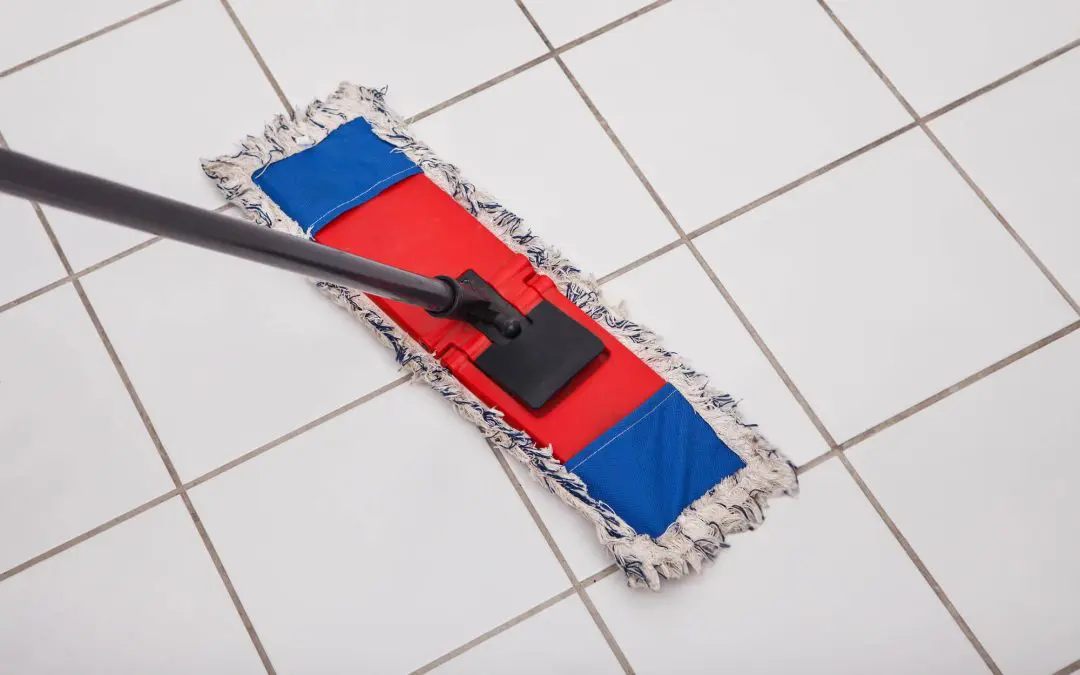Clean tile floors don’t require hours of scrubbing or buckets of suds. The real time-saver is using the right tools and a better routine. Dirt, dust, and buildup can be knocked out faster—and more effectively—if you stop relying on outdated methods.
Use Better Tools to Clean Tile Floors Faster
Start with the right mop. A flat microfiber mop outperforms a string mop every time. It picks up more dirt, uses less water, and gets into corners without sloshing grime around. If your goal is speed, steam mops also deliver. They clean tile floors while breaking down grease, lifting stuck-on debris, and killing bacteria, all without chemicals. Just confirm your tile can handle the heat. Porcelain usually can, but not natural stone.
Always Vacuum or Dry Mop First
Skipping this step just makes everything harder. Grit, pet hair, and dust turn into sludge when they mix with cleaner. Use a vacuum or dry microfiber mop before you reach for a wet one. It clears the surface, prevents streaks, and helps your cleaner do its job instead of smearing dirt around.
Clean Tile Floors Without Leaving a Film
Soap buildup is one of the fastest ways to ruin clean tile floors. Too much cleaner leaves behind a dull film that grabs more dirt. Stick to a pH-neutral tile cleaner. Spray it directly onto the tile in small sections and mop with a damp—not wet—pad. This cuts your water use, shortens drying time, and avoids unnecessary rinsing.
Stop Soaking the Floor
You don’t need a mop bucket full of water. In fact, too much water slows everything down and causes problems. Excess water can seep into grout, weaken the bond, and lead to mildew. Use a lightly damp mop, not a dripping one. Work in sections, and let each area dry before walking on it.
Don’t Ignore the Grout Lines
Grout holds onto dirt, grease, and bacteria even when the tile looks clean. Mix baking soda and water into a paste and scrub the lines with a stiff brush. For heavy stains, use an oxygen bleach grout cleaner—never chlorine bleach. Chlorine weakens grout over time and can lead to cracking or discoloration.
Clean Tile Floors on a Consistent Schedule
Waiting until your floors look dirty just makes the job harder. A quick dry mop or vacuum two to three times a week keeps loose debris under control. Wet mop once a week in high-traffic areas like kitchens and entryways. Bathrooms may need more frequent touch-ups because of moisture and product residue. Small, regular cleaning jobs are faster than waiting for dirt to build up.
Know Your Tile Type Before You Start
Not all tile is the same. Ceramic and porcelain can handle most cleaners and even steam. Natural stone like slate, marble, or travertine needs gentler products. Acidic cleaners like vinegar can damage the surface and leave it etched. When in doubt, check your tile’s care guidelines or test a small hidden area.
Dry Floors Quickly for a Cleaner Finish
Letting floors air-dry sounds easy, but it often leaves water spots, streaks, and dullness behind. After mopping, go over the floor with a clean, dry microfiber cloth or towel. It picks up excess moisture and gives your tile a polished look without adding extra time.
FAQs
What’s the best way to clean tile floors without streaks?
Vacuum or dry mop first, then use a damp microfiber mop with a pH-neutral cleaner. Work in small sections and dry as you go.
Can I use vinegar to clean tile floors?
For ceramic and porcelain, yes. Not for natural stone. Vinegar is too acidic and can damage stone surfaces over time.
How often should I clean tile floors?
Vacuum or dry mop two to three times per week. Wet mop once a week in busy areas, and more often if needed in bathrooms or entryways.
What ruins grout the fastest?
Too much water, chlorine bleach, and acidic cleaners break down grout. Stick to mild cleaners and avoid soaking the floor.
Are steam mops safe for all tile floors?
Steam mops work well on sealed ceramic and porcelain tile. They’re not safe for unsealed grout or natural stone, which can absorb moisture and crack.
Bronze Star Home Inspections provides home inspections to customers in the Dallas-Fort Worth Metroplex. If you’re buying or selling a property, contact us to request an appointment.

